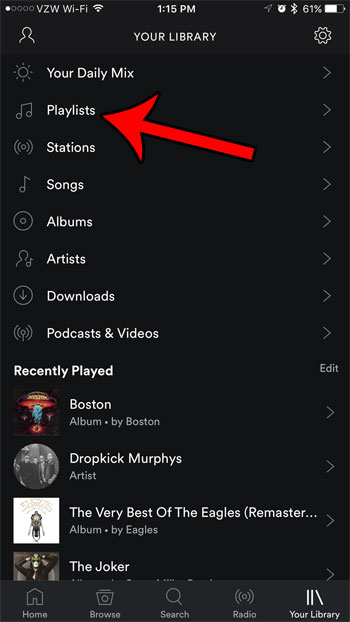Music streaming with the Spotify app provides you with several different ways to listen to music. You can create or follow radio stations, you can search for songs, or you can create and save playlists. By default, this is done as a streaming service, which means that those songs are never actually on your iPhone.
This is fine when you have a stable Internet connection, but you might find yourself traveling, or in a situation where Internet usage isn’t possible, so you are looking for a way to make Spotify available offline. Our tutorial below will show you how to do this by downloading a Spotify playlist to your iPhone so that you can listen to it when you can’t access the Internet.
How to Make Spotify Available Offline on an iPhone 7
The steps in this guide were written using an iPhone 7 Plus, in iOS 10.2. These steps require you to have a Spotify Premium account, as this feature is not available with the free version of the app.
Step 1: Open Spotify.

Step 2: Select the Your Library tab at the bottom of the screen.

Step 3: Select the Playlists option.

Step 4: Select the playlist that you want to make available offline.

Step 5: Tap the button to the right of Download to save the playlist to your device and make it available when Spotify is offline. Note that it might take a little while to download the entire playlist depending upon your Internet connection speed and the number of songs in the playlist.

If you find that you don’t have enough space on your iPhone to download all of the music that you want, then find out how to check your iPhone’s storage to see which apps are taking up the most space. You can then delete those apps to free up some space for the playlists that you want to make available offline.

Kermit Matthews is a freelance writer based in Philadelphia, Pennsylvania with more than a decade of experience writing technology guides. He has a Bachelor’s and Master’s degree in Computer Science and has spent much of his professional career in IT management.
He specializes in writing content about iPhones, Android devices, Microsoft Office, and many other popular applications and devices.